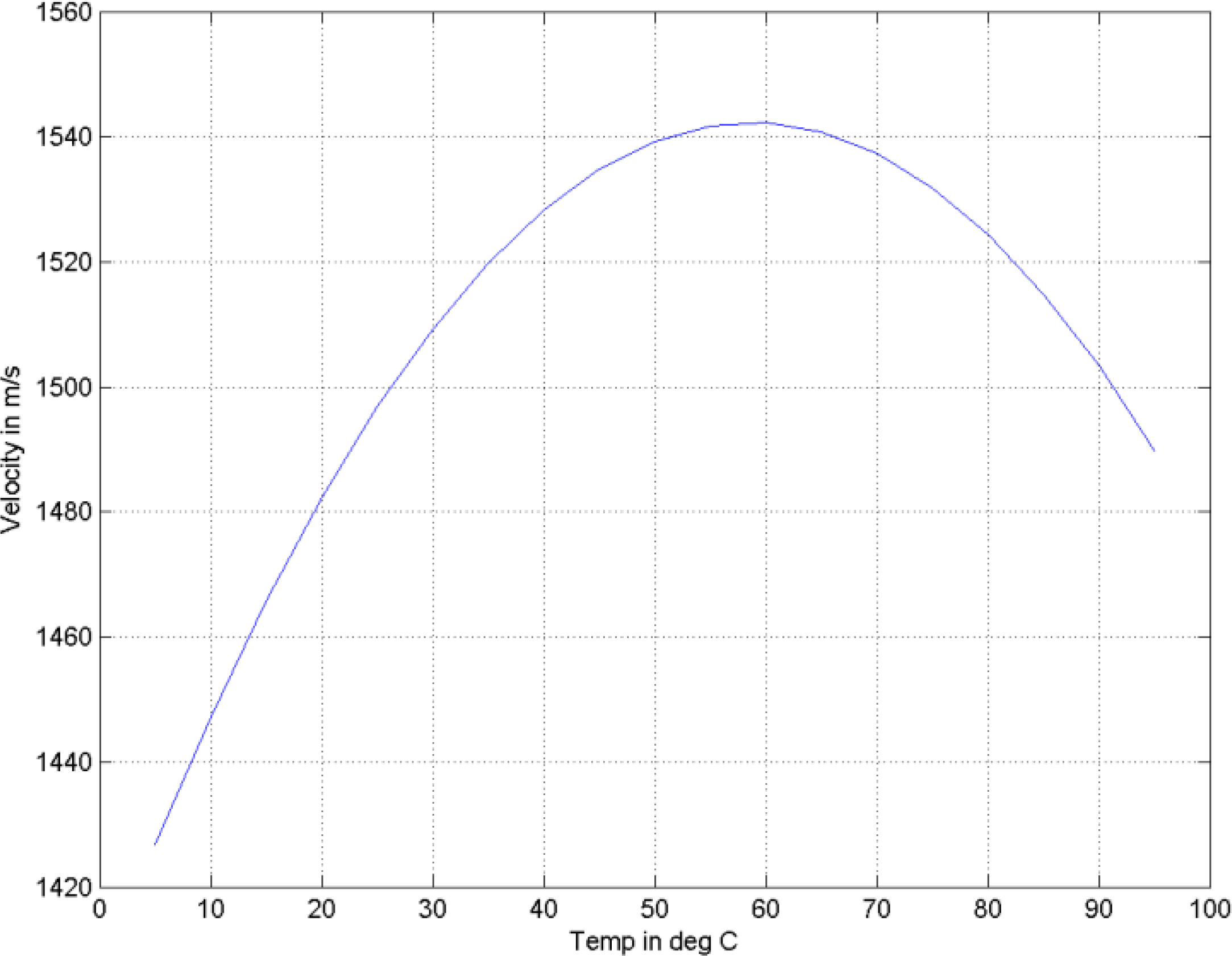SLAA889A March 2019 – July 2021 MSP430FR6041 , MSP430FR6043 , MSP430FR60431 , MSP430FR6045 , MSP430FR6047 , MSP430FR60471
1.1.1 Velocity of Ultrasound in Water is Known
When the velocity c of ultrasound in water is known, Equation 4 uses this velocity to solve for the water flow velocity v.
However, the velocity c of ultrasound in water is a function of temperature. Based on the data in Figure 1-3, Equation 5 gives a first-order simple expression for the dependence of ultrasound velocity in water. The temperature in the equation is in degrees Celsius (°C).
Figure 1-3 shows the change of velocity c of ultrasound in water as a function of temperature.
 Figure 1-3 Velocity of Ultrasound in Water as a Function of Water Temperature
Figure 1-3 Velocity of Ultrasound in Water as a Function of Water TemperatureIf the water meter does not take this temperature dependence into account and only assumes a nominal 25°C temperature, an error of up to ±3.5% can occur in the absolute time-of-flight estimation. Therefore, a temperature sensor is needed for the estimation of velocity c of ultrasound in water using Equation 4.